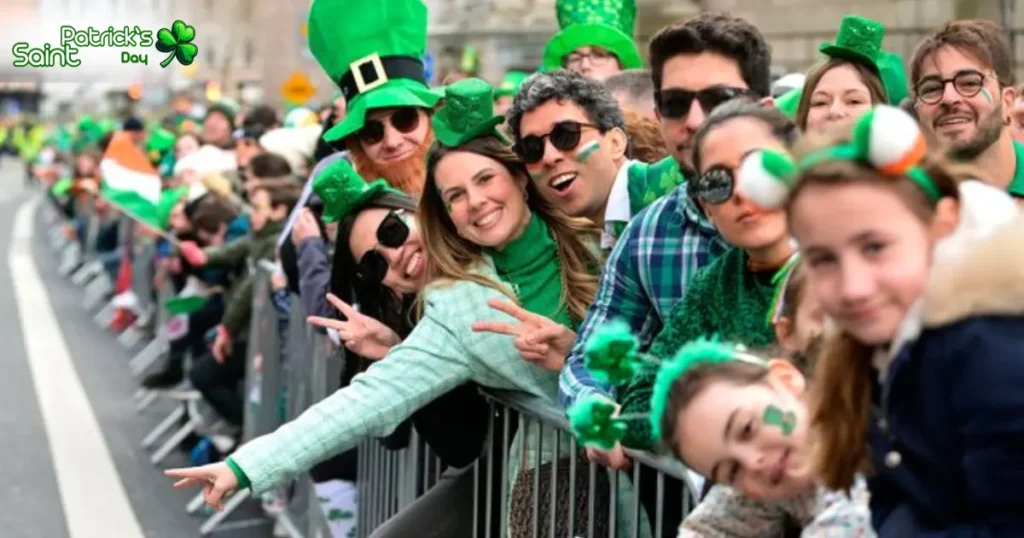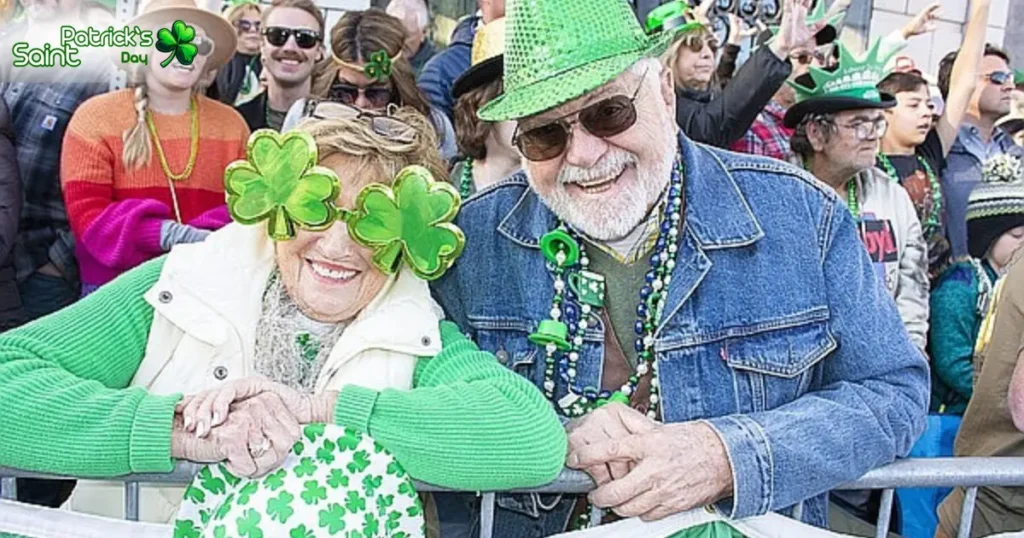St. Patrick was a 5th-century missionary who spread Christianity across Ireland. His life is surrounded by myths, including the famous snake story. Celebrated on March 17, his legacy continues through traditions, parades, and cultural festivities worldwide.
Who Was St. Patrick?

St. Patrick is one of the most well-known figures in Irish history. Born in Britain around 385 AD, his real name was Maewyn Succat.
His journey to becoming the patron saint of Ireland began when he was kidnapped by Irish raiders at the age of 16 and sold into slavery. He worked as a shepherd for six years, during which he found solace in Christianity.
After escaping captivity, Patrick returned home but later felt a divine calling to return to Ireland as a missionary. He spent decades converting pagan Celts to Christianity, establishing churches, schools, and monasteries.
His death on March 17, 461 AD became the foundation of St. Patrick’s Day, an annual celebration of Irish heritage.
1. St. Patrick Was Not Irish
Despite being Ireland’s patron saint, St. Patrick was actually born in Britain. Scholars believe he was from Roman Britain, possibly in modern-day Wales or Scotland. His connection to Ireland came only after he was kidnapped and enslaved by Irish raiders.
2. His Real Name Was Not Patrick
St. Patrick’s birth name was Maewyn Succat. He changed his name to Patricius (Patrick) after becoming a Christian priest. “Patricius” means “nobleman” in Latin, which suited his missionary role in Ireland.
3. He Was Kidnapped and Sold Into Slavery
At just 16 years old, St. Patrick was kidnapped by Irish raiders and sold into slavery. He was forced to work as a shepherd, herding sheep in harsh weather conditions for six years. During this time, he turned deeply to prayer, which strengthened his Christian faith.
4. He Escaped After a Vision
Patrick’s escape story is as fascinating as his kidnapping. According to his writings, he had a dream in which God told him to escape. He traveled 200 miles on foot to reach the coast, where he found a ship that took him back to Britain.
5. He Later Chose to Return to Ireland
After safely reaching home, Patrick had another spiritual vision, where he heard the “Voice of the Irish” calling him back. He trained as a priest and later returned to Ireland as a missionary, determined to convert the Irish to Christianity.
6. He Used the Shamrock to Explain Christianity
One of the most famous legends of St. Patrick is that he used a shamrock (three-leaf clover) to explain the Holy Trinity—the Father, the Son, and the Holy Spirit. This is why the shamrock is a symbol of Ireland and widely associated with St. Patrick’s Day.
7. He Baptized Thousands and Built Churches
Patrick dedicated over 40 years to spreading Christianity. He is believed to have baptized thousands of people, ordained priests, and built many churches and schools across Ireland. His efforts significantly shaped Ireland’s religious landscape.
8. He Did Not Ban Snakes from Ireland
A famous myth states that St. Patrick banished all snakes from Ireland. However, historical evidence suggests that Ireland never had snakes due to its climate and geographical isolation. The “snakes” in the legend likely symbolize the removal of pagan practices.
9. The Color Originally Associated With Him Was Blue
Surprisingly, blue was the original color linked to St. Patrick. It was featured on ancient Irish flags and royal garments. The shift to green happened much later, symbolizing Irish nationalism and the lush landscapes of Ireland.
10. He Was Never Officially Canonized as a Saint

Unlike many other saints, St. Patrick was never formally canonized by the Catholic Church. In the early centuries of Christianity, formal canonization was not required—saints were recognized by popular devotion. His title as Ireland’s patron saint was granted through tradition.
11. St. Patrick Had a Walking Stick That “Grew Into a Tree”
One popular legend states that while traveling and preaching, St. Patrick carried a wooden walking staff. At one stop, he planted it into the ground while speaking. The story goes that he preached for so long that the staff took root and grew into a tree.
12. He Fasted on a Mountain for 40 Days
St. Patrick is believed to have spent 40 days fasting and praying on Croagh Patrick, a mountain in County Mayo, Ireland. Today, thousands of pilgrims climb this mountain annually on Reek Sunday (the last Sunday in July) to honor his sacrifice.
13. He Had a Dream About the Irish Calling Him Back
After escaping from slavery, St. Patrick had a dream where the Irish people called him back to teach them about Christianity. This vision inspired him to return to Ireland, even though he had once been held captive there.
14. He Wrote Two Surviving Texts
Most of what we know about St. Patrick comes from two letters he wrote:
- “Confessio” – A spiritual autobiography detailing his journey and faith.
- “Letter to Coroticus” – A letter condemning a British king for enslaving Irish Christians.
These texts provide firsthand insights into his life and beliefs.
15. The Celtic Cross Is Linked to St. Patrick
St. Patrick is credited with combining the Christian cross with the sun symbol, creating the Celtic Cross. This symbol helped make Christianity more familiar to the Irish, as they had long worshiped the sun.
16. He Converted Many Pagan Kings and Druids
St. Patrick did not just spread Christianity to common people—he also converted pagan kings and druids. By bringing Christianity to Irish royalty, he ensured that the religion spread across the entire country.
17. He Used Bonfires to Celebrate Easter
The Irish traditionally honored their gods with fire-based rituals. To introduce Christianity in a familiar way, St. Patrick lit bonfires on Easter, showing that Christian celebrations could align with existing Irish traditions.
18. March 17 Is Believed to Be the Day He Died
St. Patrick’s Day is celebrated annually on March 17, the supposed date of his death in 461 AD. Over time, this religious feast day evolved into a worldwide celebration of Irish culture.
19. The First St. Patrick’s Day Parade Was in the USA, Not Ireland
While St. Patrick’s Day is Ireland’s national holiday, the first parade was actually held in New York City in 1762. Irish soldiers serving in the British army marched to celebrate their heritage. Today, the New York St. Patrick’s Day Parade is one of the largest in the world.
20. St. Patrick’s Day Was a Religious Holiday in Ireland Until the 20th Century

For centuries, St. Patrick’s Day was strictly a religious observance in Ireland. Pubs were even closed by law on March 17. The shift toward a more public celebration, including parades and festivals, happened in the mid-1900s.
21. Green Beer and Drinking Were Not Traditional in Ireland
Though now associated with beer and partying, St. Patrick’s Day was historically a sober religious event. The tradition of drinking green beer and celebrating in pubs became popular in the United States, not Ireland.
22. The Chicago River Is Dyed Green for St. Patrick’s Day
Since 1962, Chicago has dyed its river bright green in honor of St. Patrick’s Day. The eco-friendly dye lasts for about 5 hours and attracts thousands of spectators every year.
23. Irish Emigrants Helped Spread St. Patrick’s Day Worldwide
The global popularity of St. Patrick’s Day is largely due to Irish immigrants. Large Irish communities in the USA, Canada, Australia, and the UK turned the holiday into a major celebration of Irish identity.
24. The St. Patrick’s Festival in Dublin Lasts for Days
Dublin’s St. Patrick’s Festival is not just one day—it lasts for about five days, featuring parades, concerts, and cultural events. It is one of Ireland’s biggest celebrations, drawing hundreds of thousands of visitors.
25. St. Patrick’s Day Is Celebrated in Space
Even astronauts aboard the International Space Station celebrate St. Patrick’s Day. In 2011, Irish-American astronaut Catherine Coleman played an Irish flute while in space, and in 2013, astronaut Chris Hadfield shared a photo of Ireland from orbit to mark the occasion.
Why St. Patrick’s Legacy Still Matters Today
St. Patrick’s influence extends far beyond religion. He is remembered not just for bringing Christianity to Ireland, but also for shaping Irish identity, traditions, and culture. His legacy continues in modern times through festivals, global celebrations, and historical inspiration.
St. Patrick’s Influence on Irish Culture and National Identity
- St. Patrick helped unite pagan traditions with Christian teachings, making the transition smoother for the Irish.
- His missionary work and miracles gave Ireland a unique religious history.
- The shamrock, Celtic cross, and March 17 celebrations are deeply tied to Irish pride.
Ireland’s Christian roots can be traced back to his efforts, making his legacy inseparable from Irish history.
How St. Patrick’s Day Became a Worldwide Celebration

Although St. Patrick’s Day started as a religious feast, today it is a global celebration of Irish culture.
Key Reasons for Its Global Popularity:
✔ Irish Immigration: Millions of Irish immigrants brought the tradition to countries like the USA, Canada, and Australia.
✔ Parades & Festivals: Large cities like New York, Chicago, and Sydney host major events.
✔ Cultural Symbolism: Even non-Irish people participate in celebrations, wearing green and embracing Irish traditions.
✔ Commercial Growth: Businesses capitalized on the holiday with food, drinks, and tourism promotions.
The transformation from a strict religious holiday to a worldwide festival highlights St. Patrick’s incredible influence.
St. Patrick’s Day Traditions That Continue Today
St. Patrick’s Day is celebrated in various unique ways around the world. Some of the most famous traditions include:
1. Wearing Green
- Green represents Ireland’s lush landscape and St. Patrick’s association with the shamrock.
- Tradition says wearing green makes you invisible to leprechauns!
2. Parades & Street Festivals
- New York City hosts the world’s largest St. Patrick’s Day parade, with over 2 million spectators.
- Dublin’s St. Patrick’s Festival lasts 5 days, featuring parades, concerts, and cultural exhibitions.
3. Irish Music & Dance
- Traditional Celtic music with fiddles, harps, and bagpipes plays an important role.
- Irish step dancing is performed at festivals and pubs worldwide.
4. Green-Themed Foods & Drinks
- Many places serve green beer, though this tradition started in America, not Ireland.
- Corned beef and cabbage became a popular dish among Irish immigrants in the USA.
5. Dyeing the Chicago River Green
- Since 1962, the Chicago River has been dyed bright green for St. Patrick’s Day.
- The eco-friendly dye lasts for a few hours and attracts thousands of tourists.
Lesser-Known Facts About St. Patrick
✔ He was not the first Christian missionary in Ireland, but he was the most successful.
✔ His writings show humility and deep faith, proving he was more than just a legend.
✔ He turned Ireland into a Christian stronghold, influencing European history.
Conclusion
St. Patrick’s Day is more than just a holiday—it’s a symbol of cultural pride, history, and togetherness. Whether you join a parade, wear green, or simply learn about Ireland’s rich heritage, you’re participating in a tradition that has lasted for over 1,500 years.
FAQs
St. Patrick was a 5th-century missionary who converted Ireland to Christianity. He is honored every year on St. Patrick’s Day.
No, this is a myth. Ireland never had snakes due to its climate. The story symbolizes St. Patrick eliminating pagan beliefs.
The shamrock, Celtic cross, and the color green are all linked to St. Patrick, representing Irish identity and Christian teachings.
No, it is celebrated worldwide, especially in the USA, UK, Canada, and Australia, with parades, green attire, and festivities.
Blue was the original color linked to St. Patrick. Green became popular later due to its connection with Irish nationalism.
Related Post
- Best St. Patrick’s Day Drinks for 2025
- Was St. Patrick Italian? The Truth Behind His Origins
- The Best St. Patrick’s Day Quotes for Luck & Joy in 2025
- Guinness Beer Bread Recipe for St. Patrick Day 2025
- St. Patrick’s Day Celebration in Nottingham 2025

